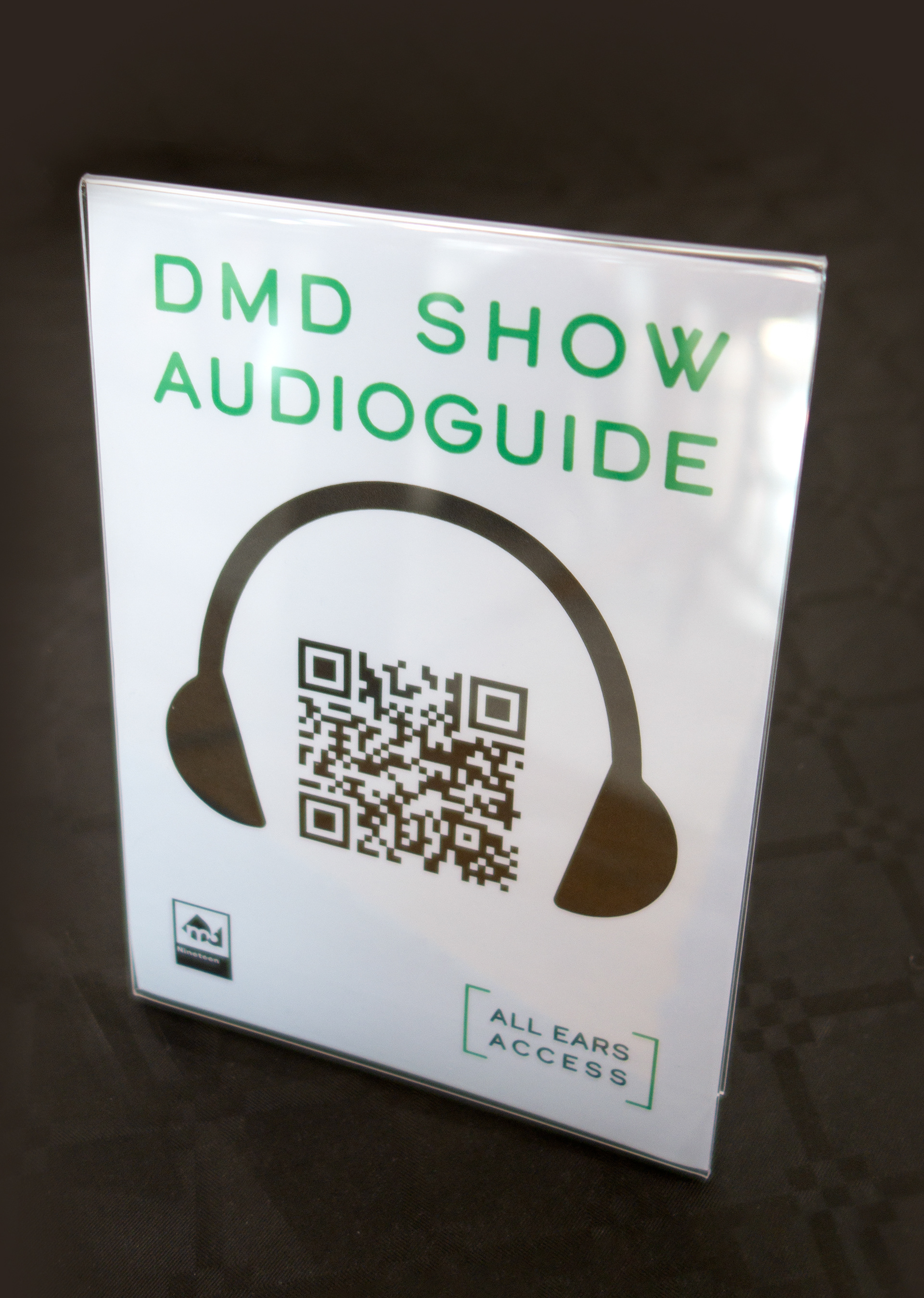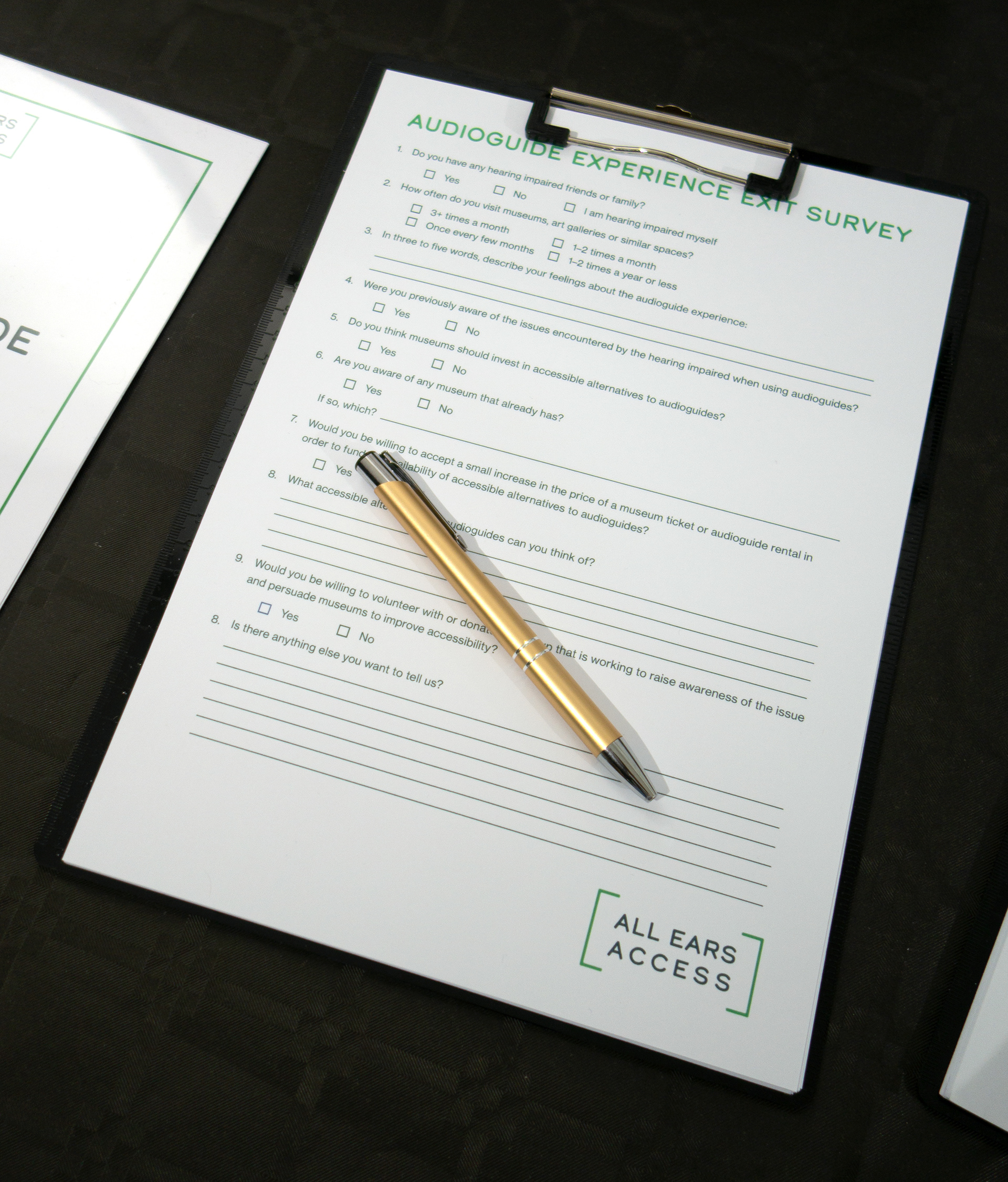The lack of guide accessibility can be extremely frustrating for hearing impaired and deaf museum visitors. Many museums only offer in-depth information about the works on display through an audioguide; this renders that information hard to access for the hearing impaired (since many types of audioguides are incompatible with hearing aids) and outright inaccessible for the deaf.
Even when efforts to improve accessibility have been made, they can often be frustrating in and of themselves. A hearing impaired person can't just grab a guide, they have to ask questions of museum staff as to whether a guide that is accessible to them is available; a deaf person can't just decide to pop in to an exhibition, they have to book a sign language interpreted tour, offered only at specific times which may well be inconvenient for them.
Thus, I designed a campaign that would help push for true and full accessibility.
The first stage of the campaign would focus on data collection, running a survey on how lack of accessibility has impacted the museum experience for the deaf and hearing impaired; it would also include an audioguide experience designed to increase awareness of the issue among hearing museum visitors.
The second stage of the campaign would then use the gathered data to build a two-pronged advertising campaign. One arm of the campaign would be aimed at the hearing public, increasing awareness of the issue and encouraging the public to support the cause. The other arm would be aimed directly at museums, presenting the data and offering suggestions for improvement. At this stage, there would also be an official museum rating system, wherein an accessibility expert would rate the guide options offered by a museum.
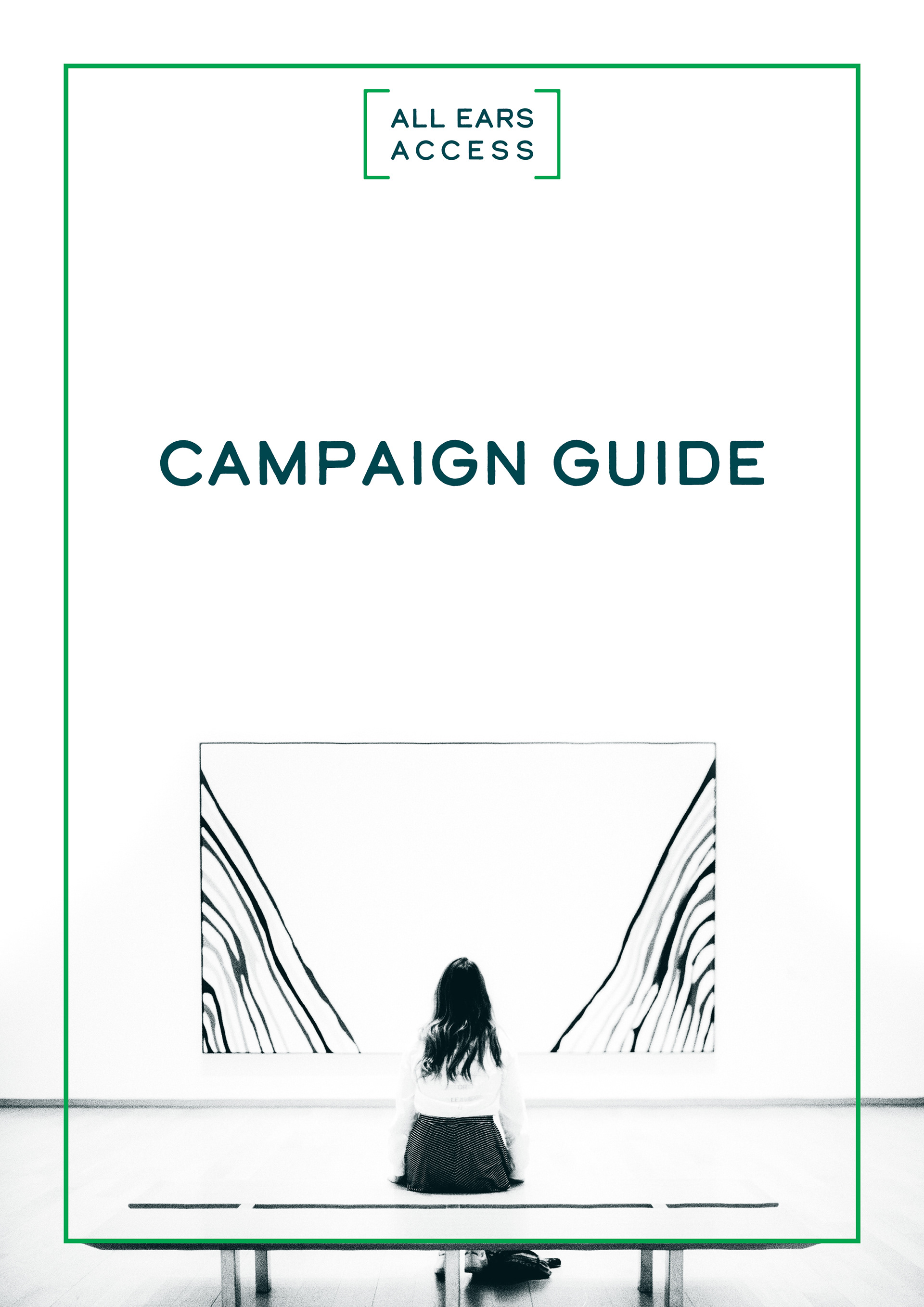
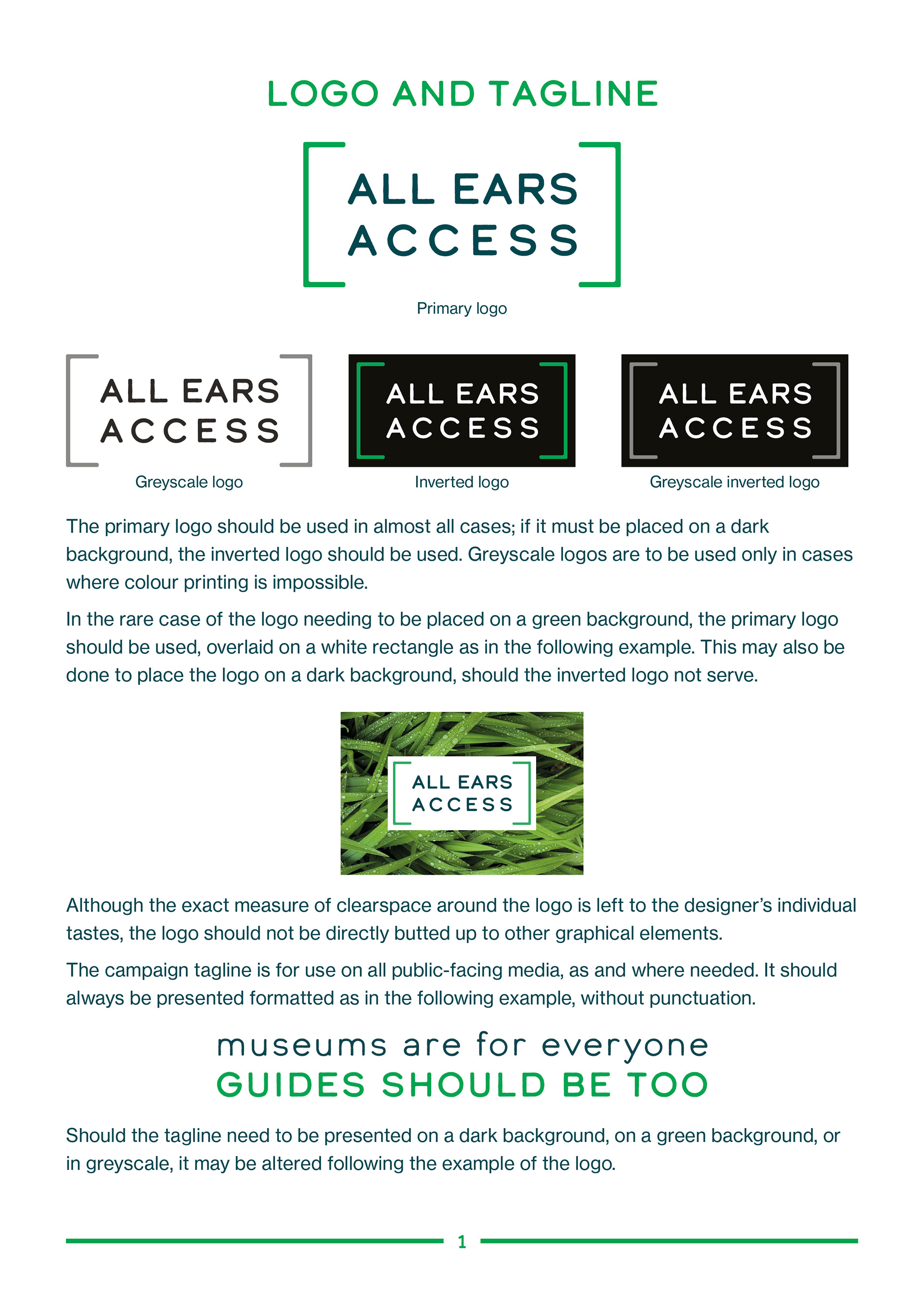

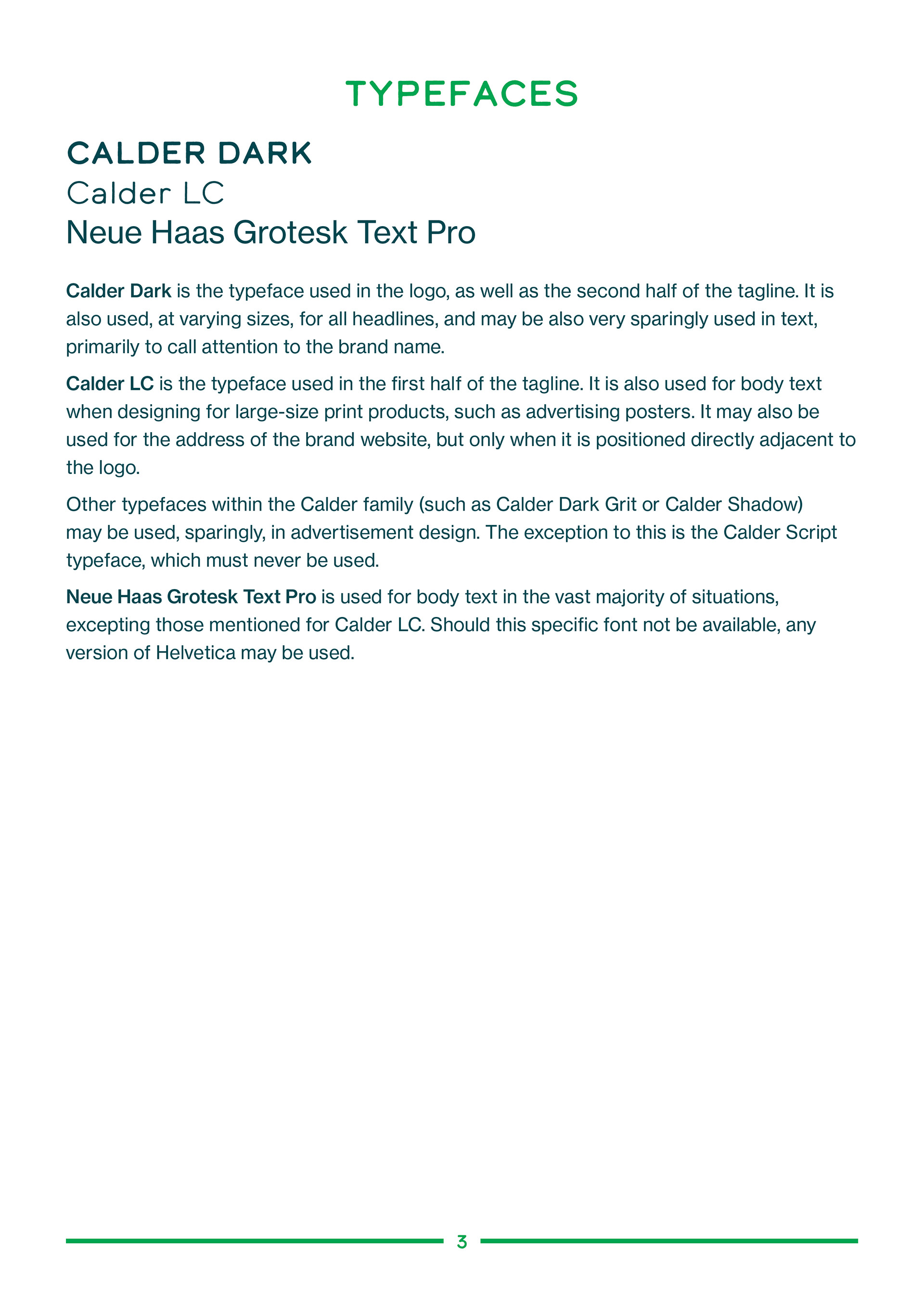
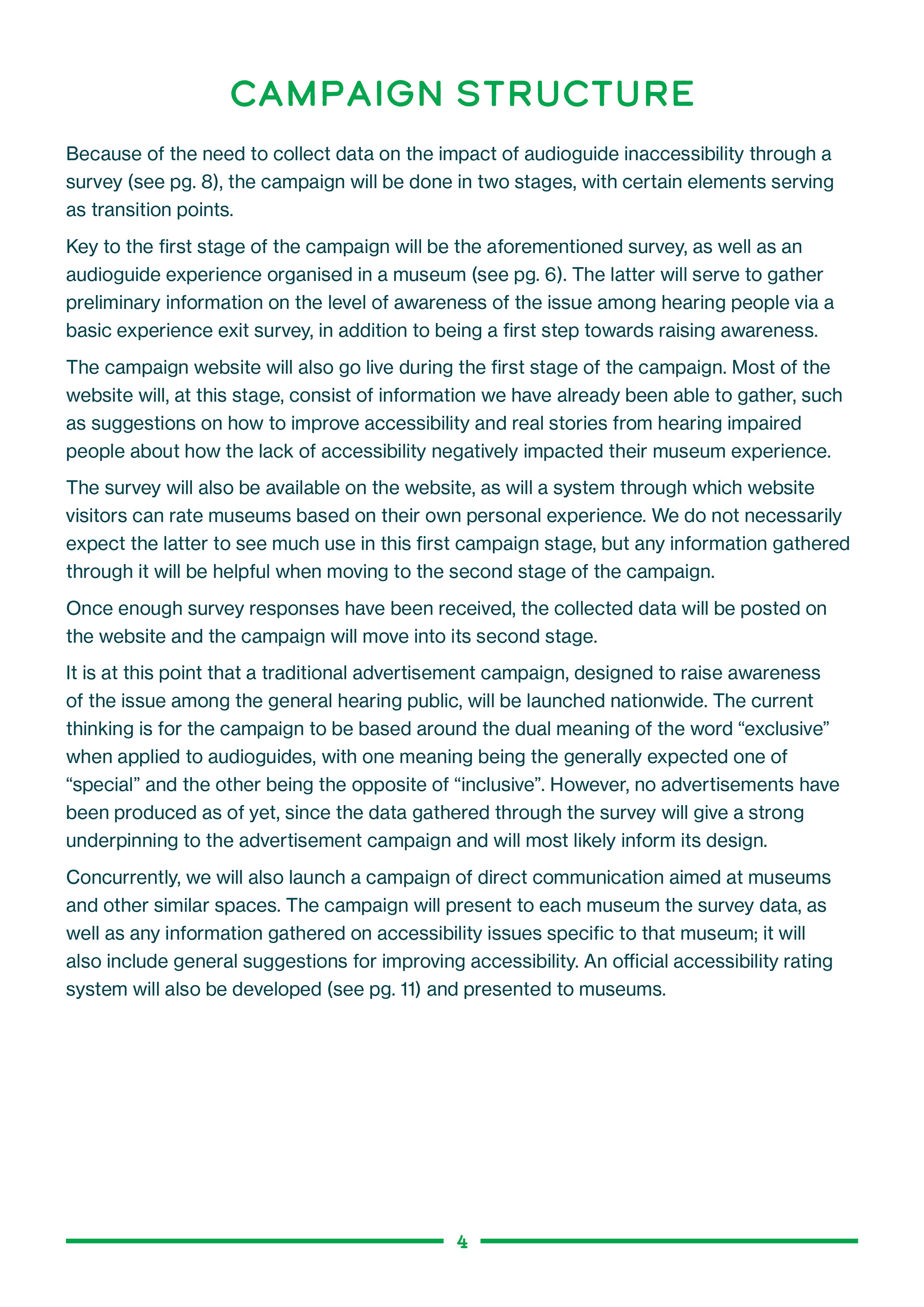
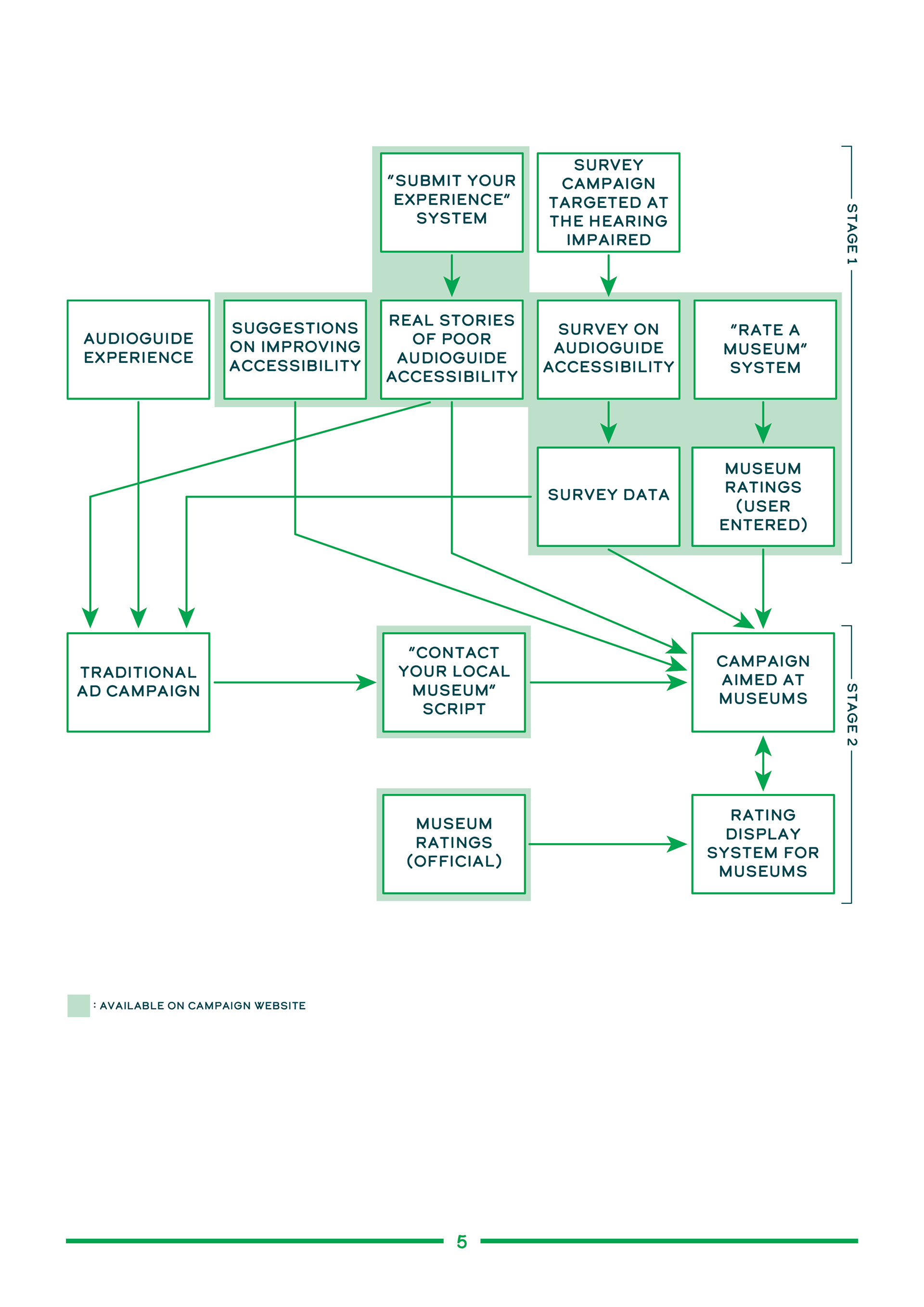
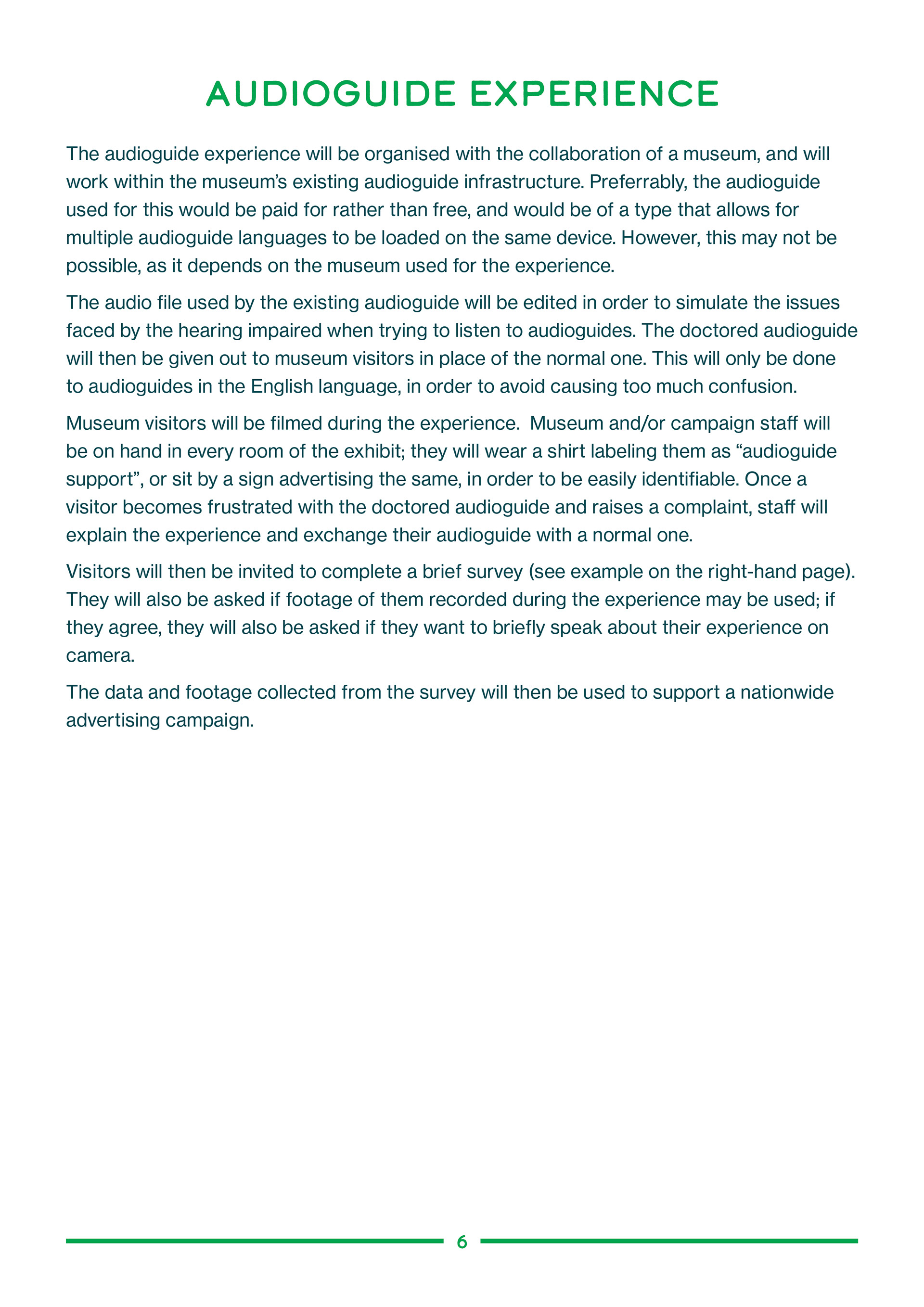
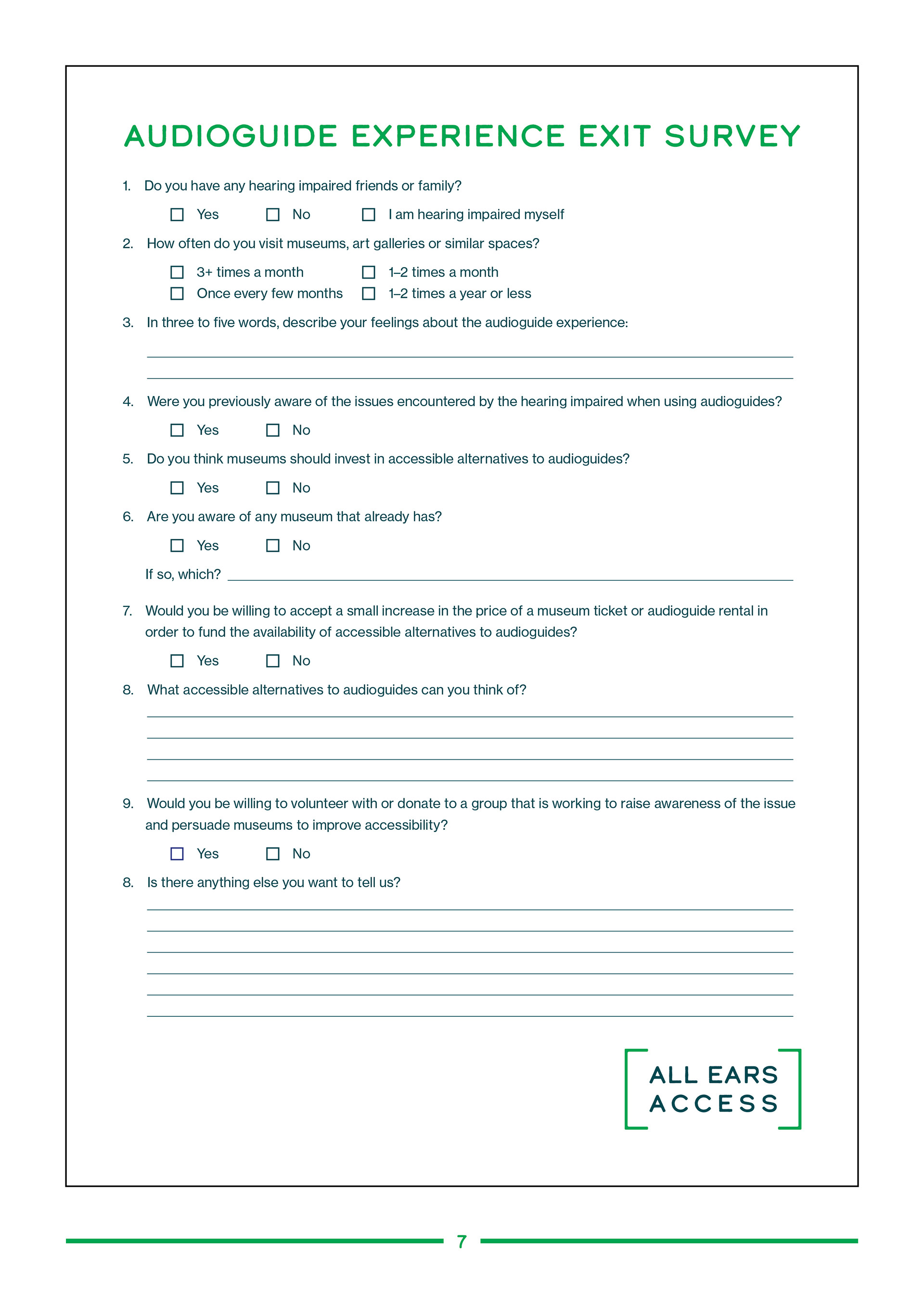

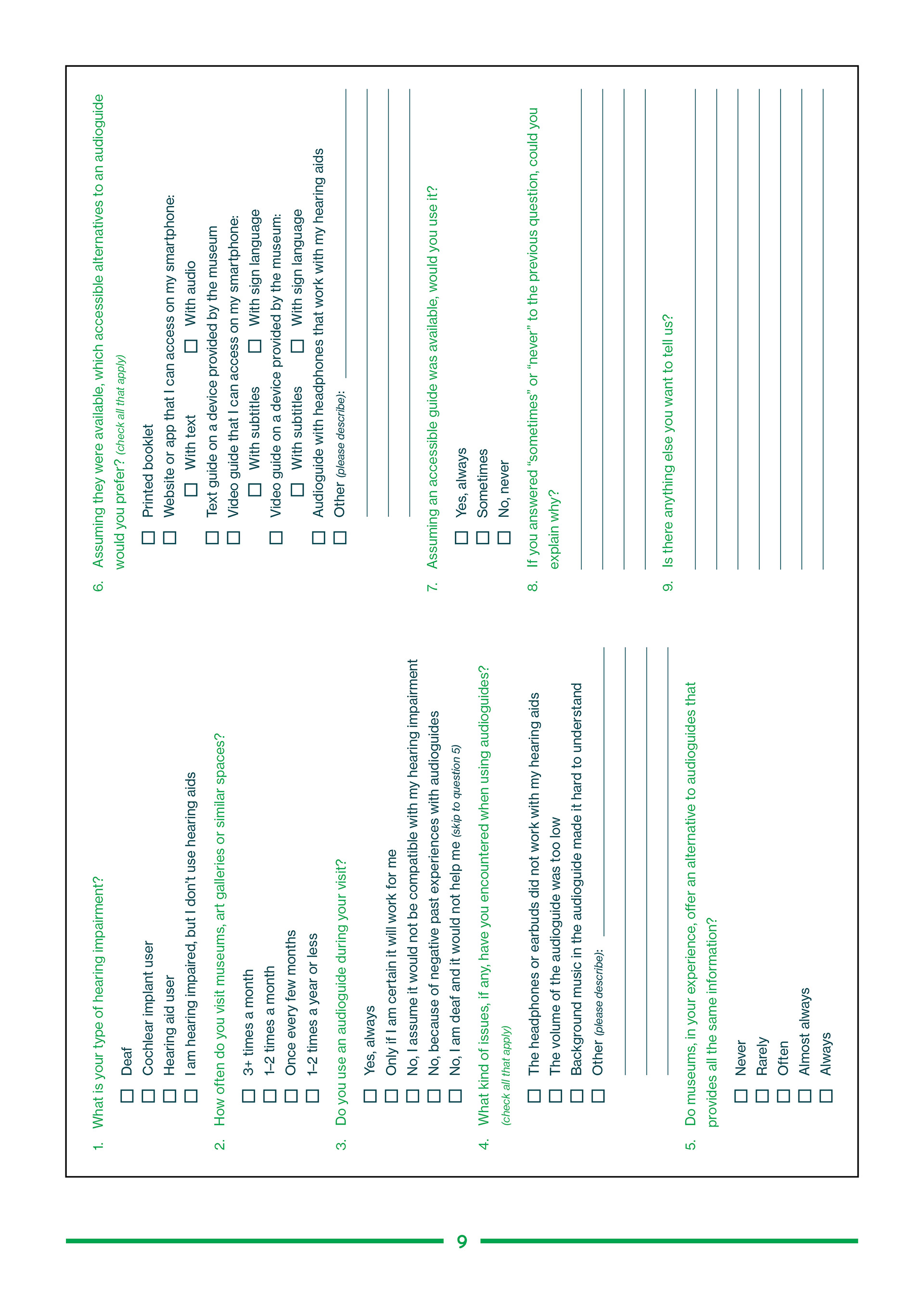
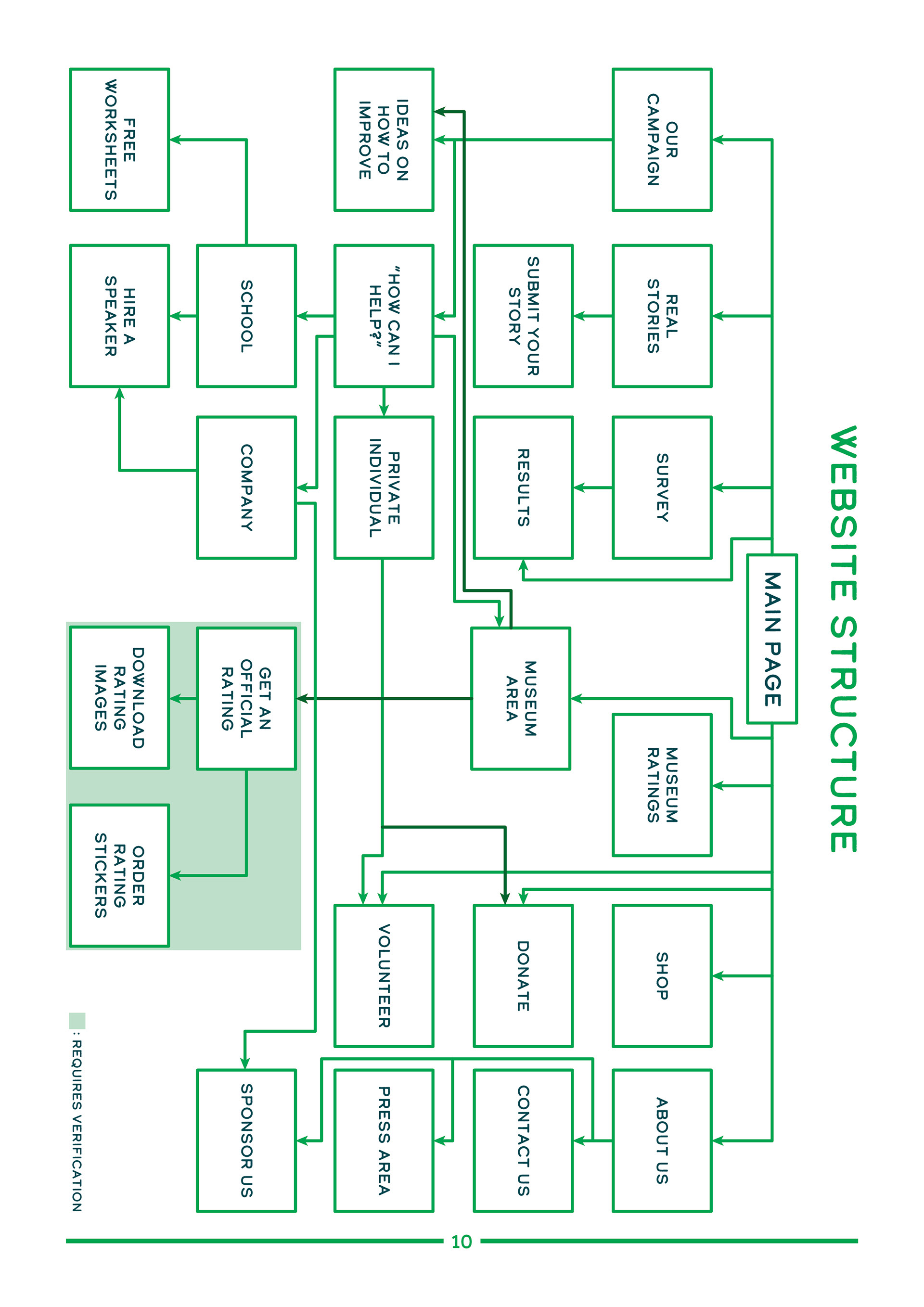
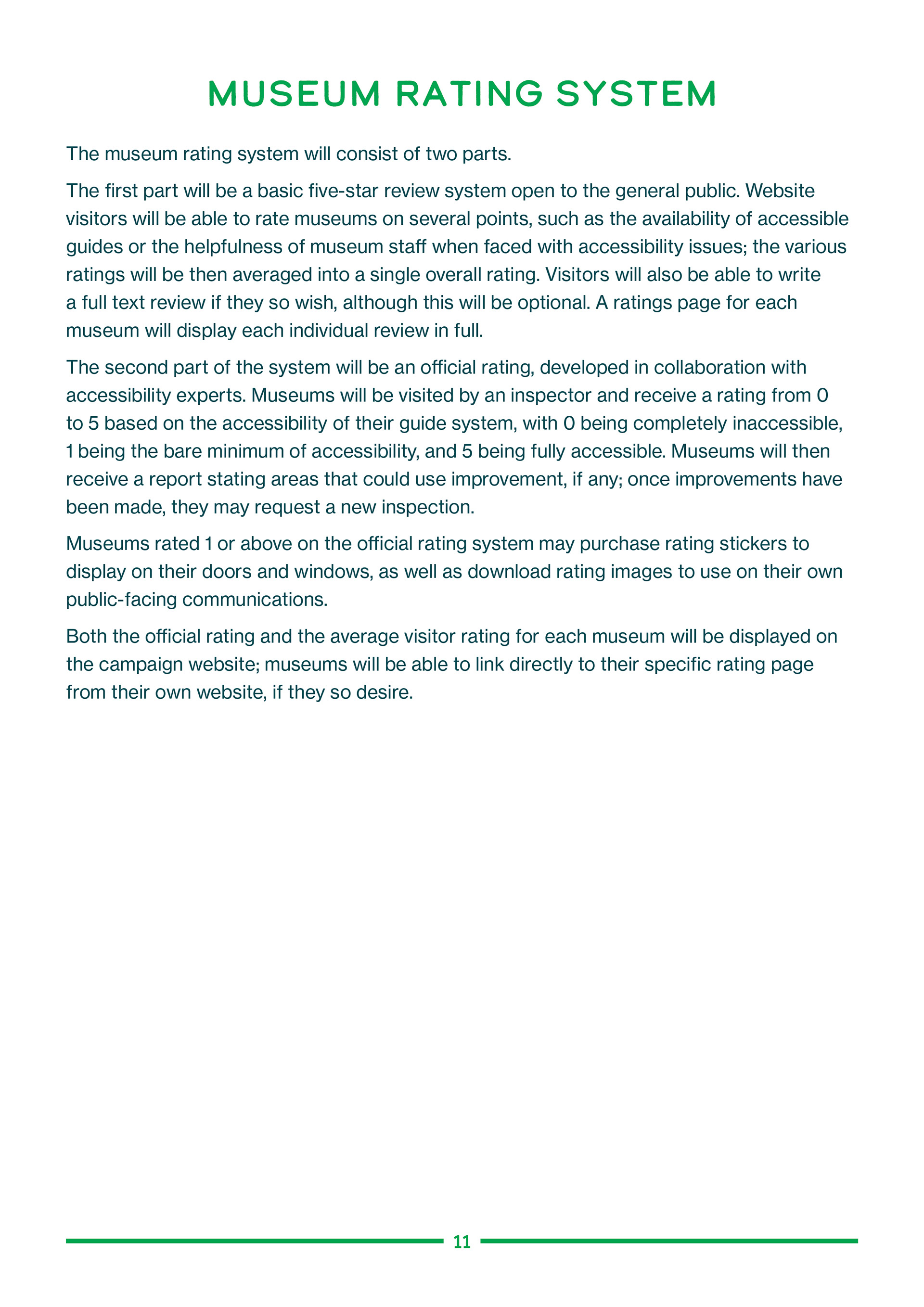

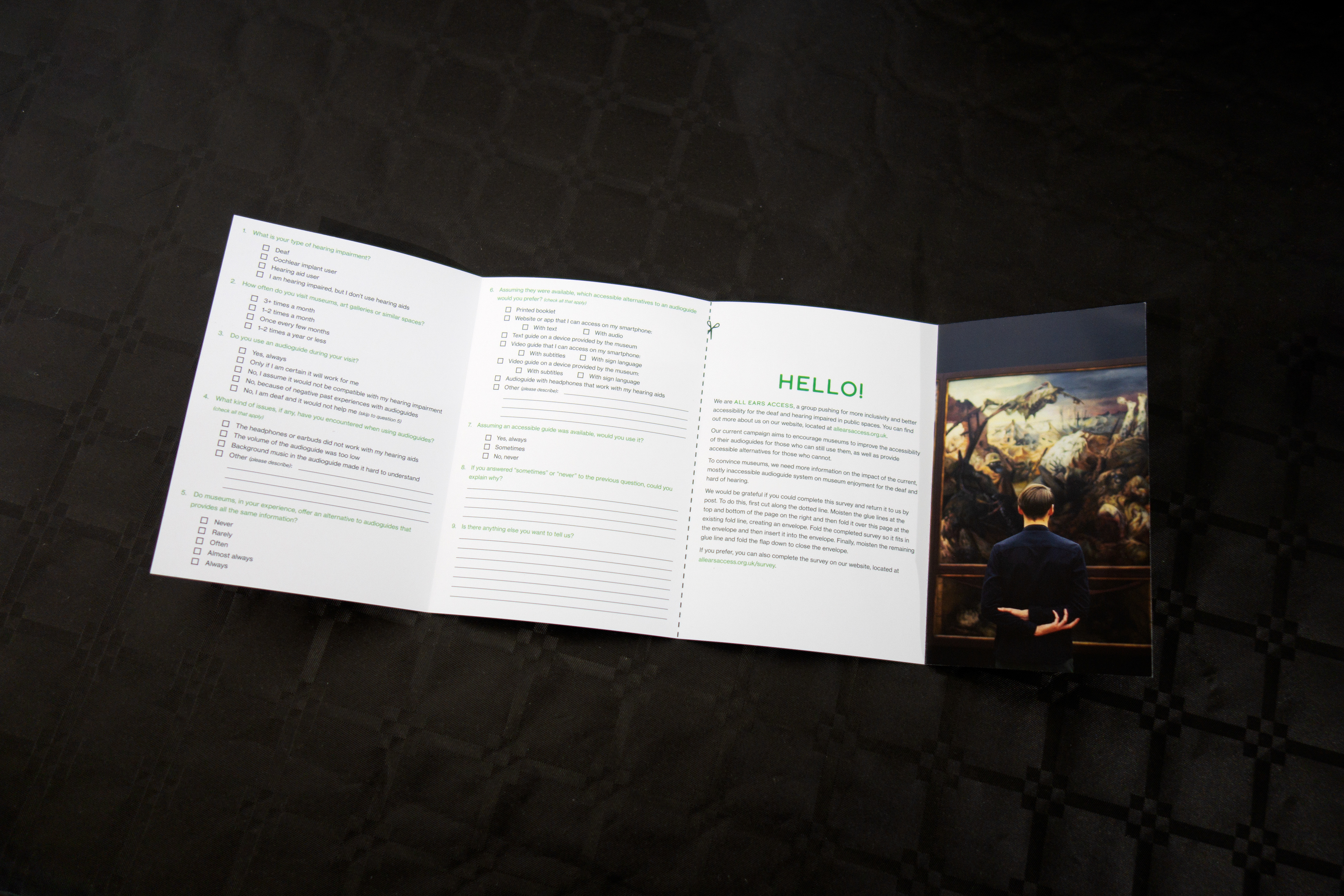
This roll-fold survey leaflet is designed to be cut on the marked line, with the right half folding into an envelope that respondents can use to mail the survey off freepost.
